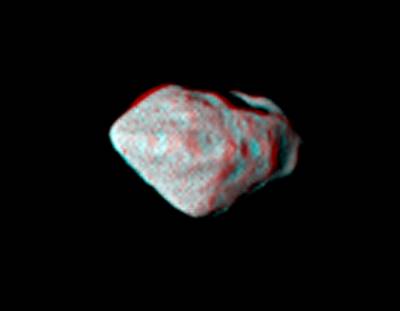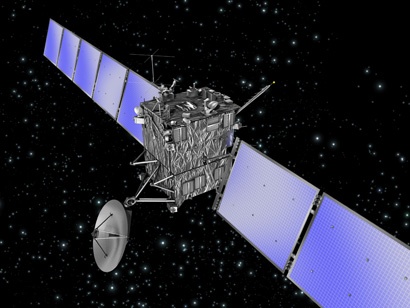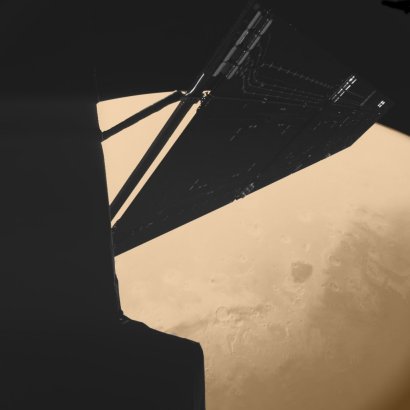06 September 2008

Credit: ESA ©2008 MPS for OSIRIS Team MPS/UPM/LAM/IAA
/RSSD/INTA/UPM/DASP/IDA
On 5 September 2008, the European spacecraft Rosetta flew by a small asteroid (minor planet), known as Steins (4.5 km across). The spacecraft came to within only 800 km from the asteroid at closest approach. The interplanetary encounter occurred at a distance of approximately 360 million km from Earth. Intriguingly, the images acquired by Rosetta during the flyby show Steins to be diamond-shaped.
Rosetta passed Steins at a relative speed of 8.6 km/s, or approximately 31,000 km/h. The ultimate target of Rosetta’s 11.5-years mission is Comet 67P/Churyumov-Gerasimenko. The spacecraft will conduct a close study of this interesting comet, and will deploy a space probe, named Philae (after an Egyptian island in the Nile), to land on the nucleus of the comet.
Rosetta is currently orbiting the Sun. It will visit a larger asteroid, known as Lutetia, on 10 July 2010. Another major event in the timeline of the Rosetta mission is the spacecraft’s Earth flyby in November 2009.
Communications with Rosetta were interrupted during the flyby, as the spacecraft’s antenna had to be turned away from Earth. Radio signals from Rosetta took approximately 20 minutes to reach Earth.

Rosetta spacecraft
Credit: ESA
Steins belongs to the rare class of E-type asteroids, which had not been directly observed by a spacecraft before. The spectacular images were obtained applying Rosetta’s OSIRIS imaging system and VIRTIS infrared spectrometer.
"Steins looks like a diamond in the sky," said Uwe Keller, Principal Investigator for the OSIRIS imaging system.
Steins shows several small craters, and two huge ones, one of which is 2 km across, indicating the asteroid’s surface must be very old.
"In the images is a chain of impact craters, which must have formed from recurring impact as the asteroid rotated,” said Rita Schulz, Rosetta Project Scientist. “The impact may have been caused by a meteoroid stream, or fragments from a shattered small body."
The density of craters on the surface of a planetary body indicates its age and evolution (the more the number of craters, the older the surface). Crater counts are now underway to determine the age of Steins. So far, 23 craters have been spotted.
"It looks like a typical asteroid, but it is really fascinating how much we can learn from just the images,” said Gerhard Schwehm, Mission Manager for Rosetta. “This is our first science highlight; we certainly have a lot of promising science ahead of us. I’m already looking forward to encountering our next diamond in the sky, the much bigger Lutetia."

Rosetta flies by Mars, the Red Planet
Credit: CIVA / Philae / ESA Rosetta
Rosetta was launched into space on 2 March 2004, aboard the powerful Ariane 5 rocket. Rosetta flew by Mars once, on 25 May 2007, and flew by Earth twice, in March 2005, and November 2007, respectively. In May 2014, Rosetta will enter an orbit around Comet 67P/Churyumov-Gerasimenko, and will release the Philae comet lander, to study the composition of the comet’s nucleus.
References
The European Space Agency (ESA) Website
Aymen Mohamed Ibrahem
Senior Astronomy Specialist